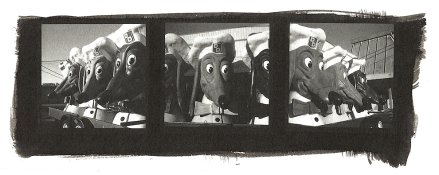Of course you have to be stimulated some way to want to take the picture. But then, you have to compose it in a way so you can convey to others what you saw that inspired you. That's the hard part. Cameras don;t do our brains or eyes very well.I couldn't disagree more. When "composition" rules the photo becomes trite, decorative.
"A picture begins" when I see something that stimulates me in some way.
"Composition" is preached by "art teachers" who have nothing significant to contribute.
A photograph isn't a painting.
As an aside, there is nothing wrong with decorative photos. Most art is decorative. Or just a snapshot or slightly better memorializing something we saw or visited. Rarely does a photo reach that rarified level where we gasp. I'm not so pretentious to think otherwise about my shots although it is nice to get an "atta boy" now and then.






